Huge Ornamental Tree for Any Landscape
Fast Growing Evergreen
The Deodar Cedar (Cedrus deodara) is an evergreen tree that can reach 70 feet high and up to 40 feet wide. It is a popular landscape specimen that provides year-round interest with its attractive pyramid shape and lovely green-silver color. This tree is fast growing, making it an excellent choice for a windbreak or a natural privacy screen on your property. Deodar Cedars make a stunning focal point when three to five trees are clustered in a large, open area. Line them along your property to increase your privacy. Enjoy for generations.
No-Fuss Tree
Deodar Cedar Trees thrive in a variety of moist, well-drained soils including loam, sand and clay. It is tolerant to drought and prefers a location that provides full sun. This tree lives a long time, requires little pruning, if any, and is relatively free from health issues, so once planted, it will provide maintenance-free beauty for generations.
Graceful and Majestic
Elegant branches sweep toward the ground and then up. Two-inch long whorled needles give this tree a softer look. These needles drop in the spring, allowing for new growth. Male trees produce catkins that hold copious amounts of pollen, which is spread in the early spring. Female trees have 3-5 inch egg-shaped cones that shatter, releasing the seeds of the tree.
Order Now
Your tree(s) will arrive healthy and ready to thrive. Place your order now and we'll ship it out the next business day.
Planting & Care
The Deodar Cedar (Cedrus deodara) is a drought-tolerant evergreen producing 1-2 inch long needles described as blue-green or even a green-silver color. There are typically about 20-30 needles in whorls on their branches as well as reddish-brown cones that are 3-4 inches long at maturity. These cones will eventually break off which allow seeds to disperse. Adored for its weeping habit, the branches extend out, angling down slightly while the tips rise upward. Reaching mature heights of up to 70 feet and widths of 20-40 feet, they make a great windscreens for large yards and also bring an ornamental element often seen in parks or other larger gardens. Recommended for USDA growing zones 7-9, they grow best in warmer climates and can withstand temperatures down to 10 degrees.
Seasonal Information: Plant your Deodar in the spring after your ground has thawed, or in the fall well before your first frost. You can also plant in summer, but be sure your tree is getting adequate water. The best time to plant is on a cooler, cloudy day. Since they do best in growing zones 7-9, they prefer climates with warmer winters and plenty of sunlight.
Location: Choose a location where your tree is going to have plenty of space to grow and it’s lower branches will not be in the way. Make sure it can get full sunlight and no shade from other surrounding trees or structures. It can thrive in various soils including sandy, loamy, clay, or slightly acidic, but be sure your soil drains well as these trees do not like wet feet.
Planting Instructions:
1) Dig a hole for your tree 2-3 times the width of the root ball and of equal depth. Amending your soil with peat, compost or manure will help it to drain better.
2) Remove your Cedar from its growing pot and place tree in the hole ensuring the top of the root ball is even with the ground.
3) Adjust your tree’s position to ensure that it is sitting straight and begin to backfill the hole, tamping down lightly as you go.
4) Once the hole has been completely covered, water your tree deeply to settle the soil and help fill any air pockets.
5) Mulch around the base of your tree to help conserve moisture in the soil.
Watering: These trees are drought resistant and once established will be fine with occasional rainfall. If you are experiencing times of extreme heat and drought, be sure to provide some extra water for your trees. They do not like standing water so avoid over watering which will lead to root rot.
Pests and Diseases: The Deodar Cedar produces an aromatic oil that will naturally deter insects so it is relatively pest and disease free. Giant conifer aphids can occasionally be an issue, but are usually not severe enough to cause death to the tree.
Pruning: These trees are low maintenance and require little to no pruning. Removing any dead or broken branches will be sufficient enough pruning.

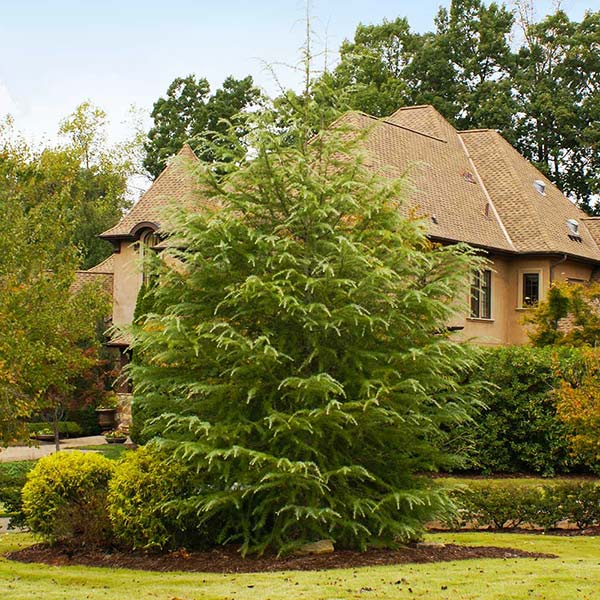
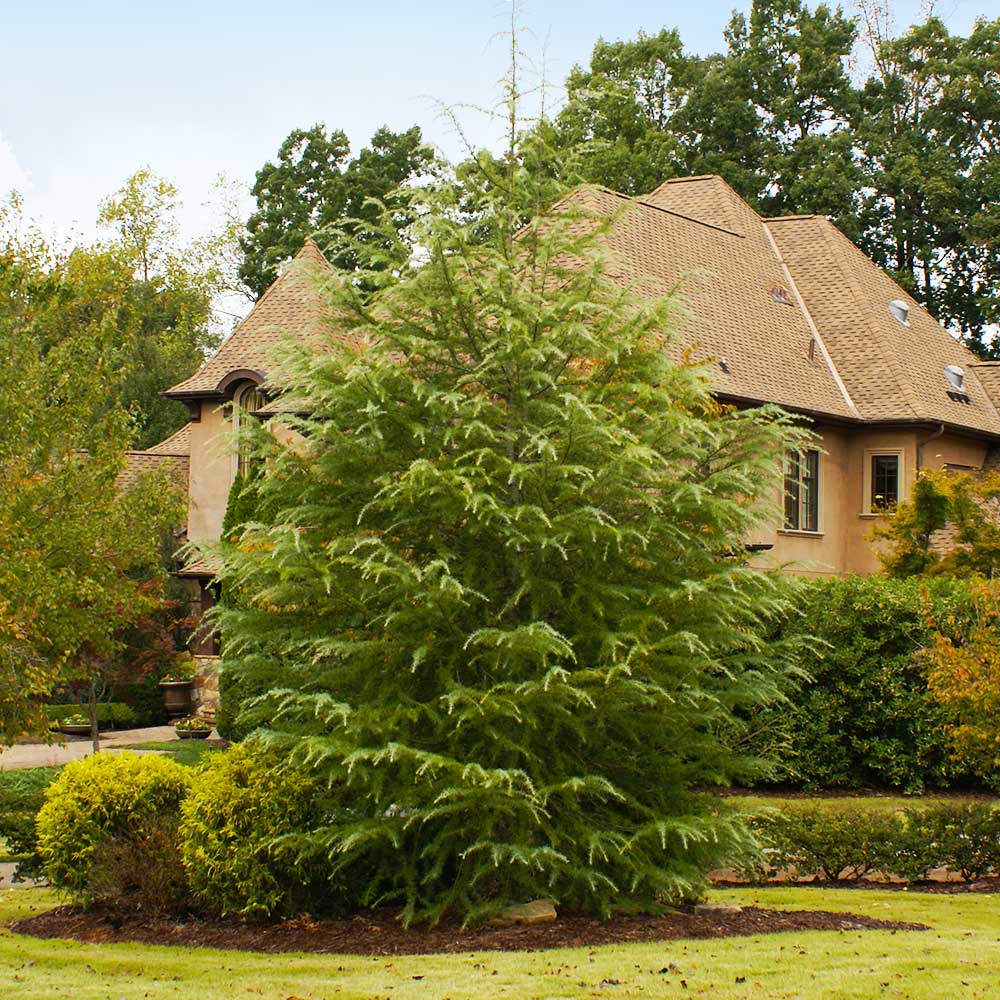
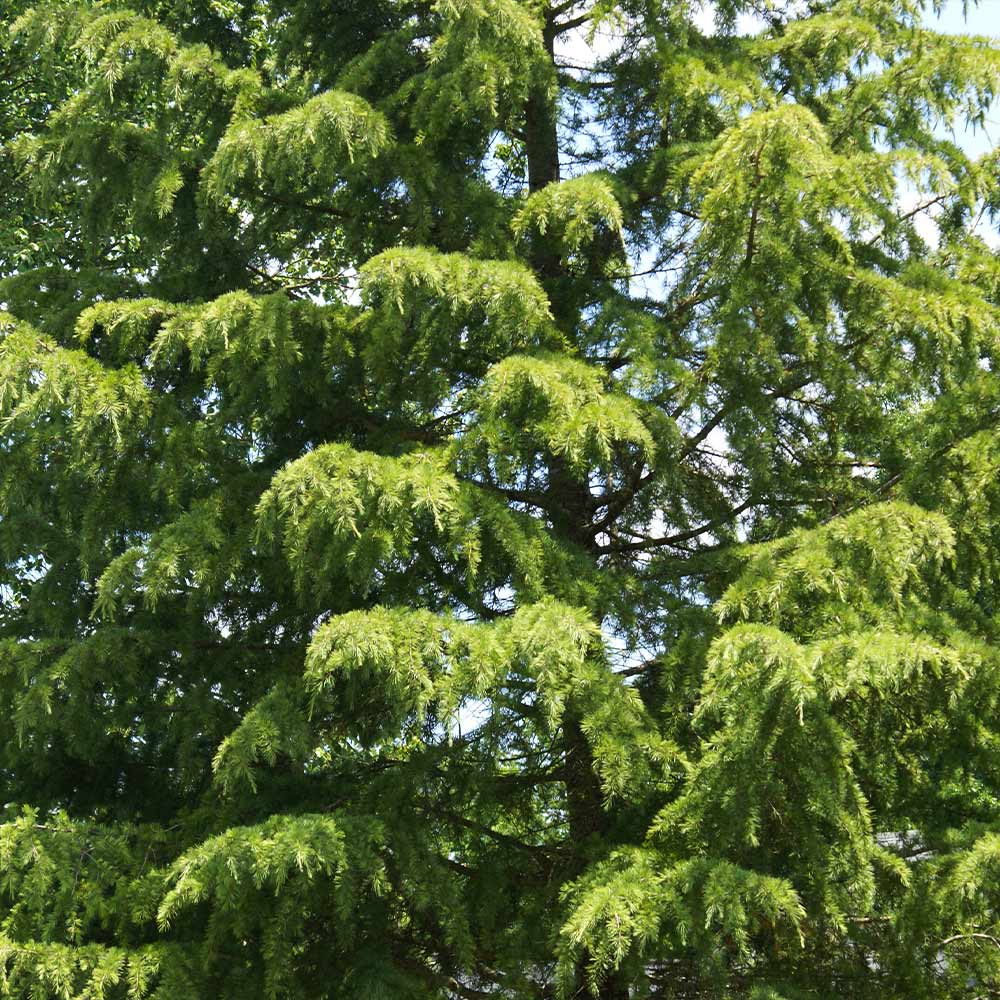

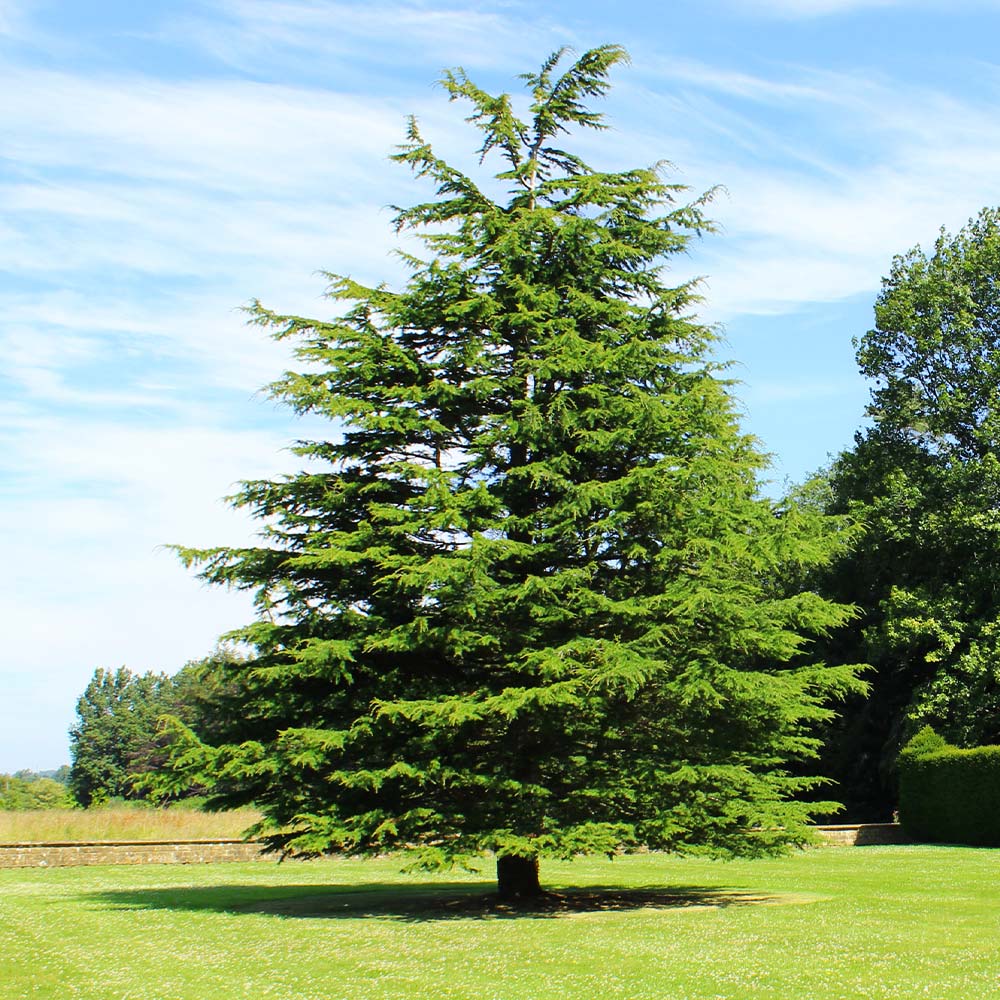
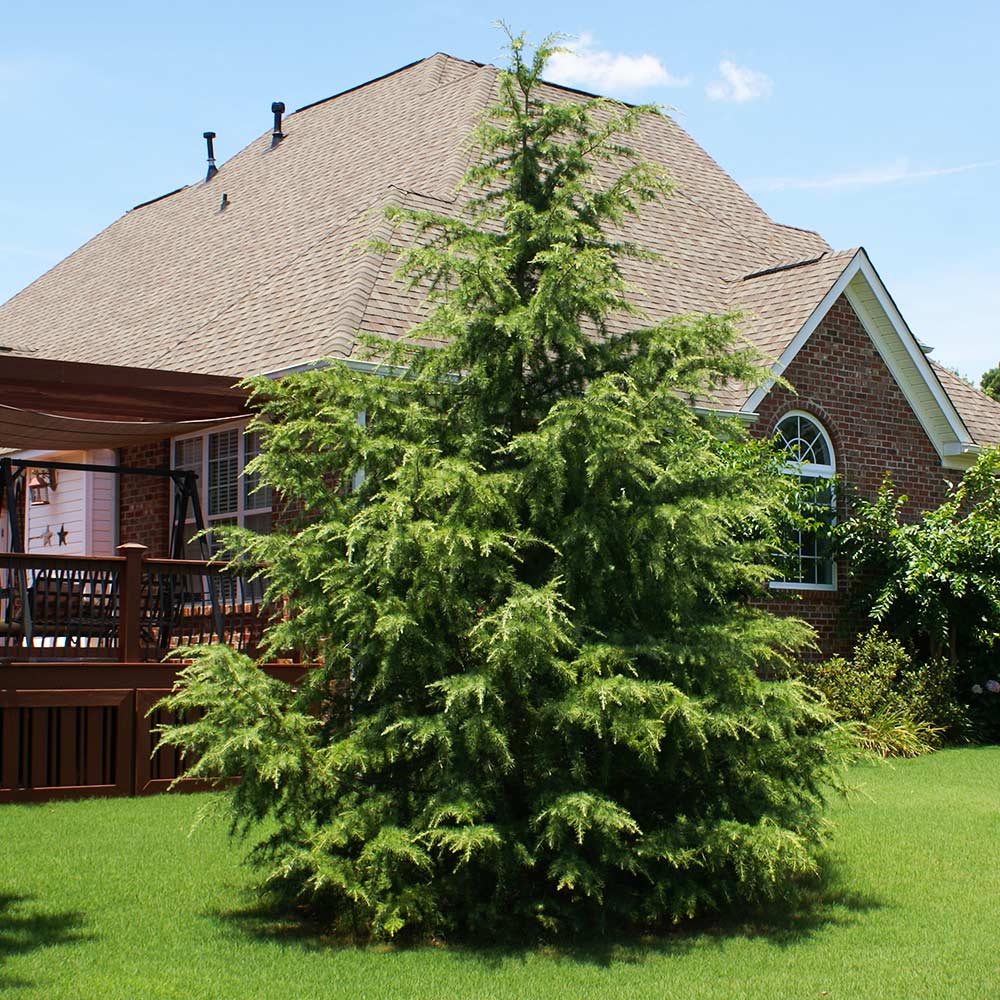


Comment